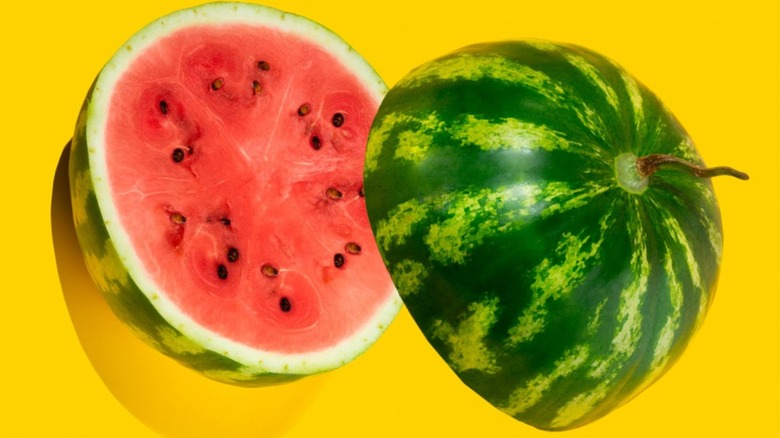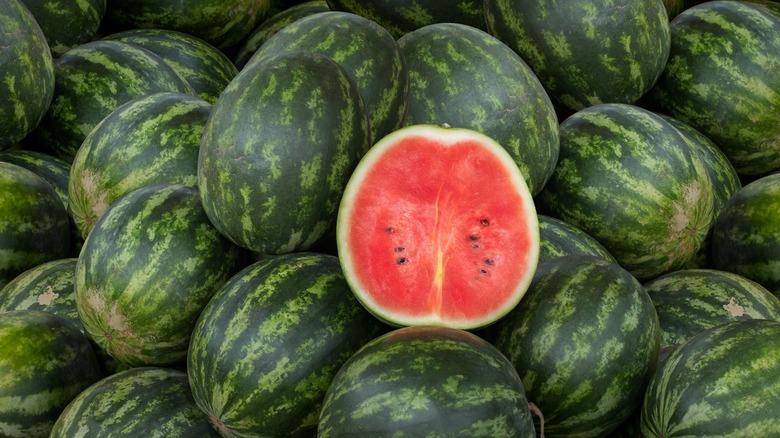Why You Should Consider A Watermelon's Shape When Buying One
"In Watermelon Sugar" isn't just the alluring name of a Richard Brautigan novel — and Harry Styles' "Watermelon Sugar" isn't just a sweet anthem.
According to the authorities at the National Watermelon Promotion Board, the berry is 92% water, which might account for why watermelon has become such a beloved summertime staple. There's a reason August 3 (a day during peak sweltering dog days) has been deemed National Watermelon Day. In fact, in the U.S., the average consumer downs roughly 14 pounds of the juicy melon every single year, per Statista. Talk about a watermelon sugar high (thanks, Harry).
But, before you slice up that melon for a refreshing lemonade (or something stronger), give it a good once-over. Symmetry isn't just a (kind of odd) beauty standard for humans (per Psychology Today); it applies to watermelons, too. Next time, scan the produce aisle for a symmetrically shaped watermelon. No matter whether you prefer an oblong or oval-shaped melon, make sure your fruit is firm and uniform (per Leite's Culinaria). (Call us vain.)
But, this being said, you shouldn't pick a symmetrical watermelon just because it might look prettier on your kitchen countertop. The shape of your watermelon can reveal more about the fruit inside than you might think.
Symmetry is key when it comes to watermelon shape
According to Healthline, dents and perforations in the surface of your watermelon can be signs of rot or potential spoilage. Similarly, bumps and an irregular overall shape can be signs of inconsistent watering during growing, or even incomplete pollination. Joe Kemble, vegetable specialist at agricultural education institution Alabama Extension, explains the science behind it. A watermelon, he says via Growing America, requires one grain of pollen per ovule of fruit in order to be fully fertilized. These ovules then turn into watermelon seeds post-fertilization. Without proper fertilization, the melons cannot achieve their signature ripe, juicy mouthfeel.
Daniel Egel of the Purdue University Agricultural Center says a thorough visual analysis of your watermelon will provide all you need to know about how fresh its insides are. A smooth watermelon rind, Egel maintains, is a good indicator of firm, ripe fruit; overly lumpy rinds are often attached to an unsightly discolored rim on the inside. Further, a melon that is visibly filled-out in its shape and plump on both ends has reached peak freshness, per Egel. If the ends of your melon look pointy or thinner than the center, give the watermelon more time to ripen up and further develop its shape before slicing.

